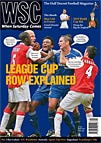 Bristol Rovers look to rebuild, reports Steve Menary
Bristol Rovers look to rebuild, reports Steve Menary
With their discounts and perennially empty pockets, students are not big favourites of cash-strapped football club chairmen, but could that be about to change?
In January, Bristol Rovers got detailed planning permission for a £30 million ground redevelopment that is not going to work without students. The scheme involves flattening the crumbling 12,000-capacity Memorial Ground that the club shares with Bristol rugby union club and building a new 18,500-seat stadium. Rovers can afford this by building student accommodation in the four corners of the new ground.
Rob Guy, managing director of the project’s architects, S&P, explains: “If a club goes to a bank and says ‘we want some cash for a stadium redevelopment’ they get laughed at, but if you are building 500 student rooms as well you get a very different response.”
After selling their old Eastville ground then being exiled at Bath City’s Twerton Park, Rovers returned to Bristol in 1996 to share the Memorial Ground, which the football club then bought for a mere £10,000 after the rugby club got into financial trouble. Rovers need a new stadium because the Memorial Ground is a mess but also because, by the 2009-10 season, all Premiership rugby union clubs need a 15,000-capacity ground with 80 per cent of it seated. To keep the rugby club as fee-paying tenants, Rovers’ chairman Geoff Dunford had to do something and turned to local house builder Ed Ware, a dedicated Rovers fan, although not a member of the board.
The idea of selling off unused corners of stadiums for development is not new, as Leyton Orient did that at Brisbane Road to fund a revamp of their stadium (see Endless Misery, WSC 221), but that land was sold for private housing to Bellway, rather than being built on by the club itself.
Guy adds: “The club got planning to redevelop the north stand but decided it wasn’t worthwhile. Geoff Dunsford had been to Orient and looked at a private residential scheme, but the amount of affordable housing Bristol City Council wanted meant that wouldn’t work either.”
The council demanded 30 per cent of any new homes at the Memorial for affordable housing. That would have drastically reduced the cash Rovers could make – so Dunsford turned to the students. After talks with Filton College and the University of the West of England, both agreed to take some of the 546 rooms in the project, most of which will be divided into sections of five bedrooms with a combined kitchen, sitting and dining area.
Rovers are acting as developer and will sell the rooms to financial institutions with a guarantee to take most of the rooms from Filton and UWE. That cuts down on the risk and Rob Guy foresees only one real problem. “There is a potential difficulty to do with noise and exams in May, but they will have to soundproof the rooms for building regulations anyway,” he says.
The club have a builder lined up in long-standing shirt sponsor Cowlin, whose chief executive Nick Higgs, an ardent Gas fan, joined Rovers’ board last year after a number of other directors quit. Even the supporters’ trust, which is at odds with the board and chairman after being asked to pay £20 for shares in a club other directors only paid only 50p each for, is happy.
Trust acting chair Gary Marks said: “For those who witnessed Eastville crumble around them, who travelled to Bath for ten years to enjoy the delights of ‘Azteca Twerton’ and who have spent the last few years watching the club slip to its lowest league position in history at what is basically a rugby stadium, [the planning approval] will conjure up both relief and hope. The decision is a huge opportunity for the club and the trust hopes the project will be completed with the same level of professionalism and hard work that went into getting it this far.”
Most fans appear to agree and according to a local newspaper survey a majority are willing to return to Bath at the start of next year when work begins, so could it start a new trend? Simon Inglis, author of The Football Grounds of Great Britain, says: “[There could be] lack of ventilation for the pitch through the corners [and] possible circulation issues, but maybe a better atmosphere with sound kept in and greater sense of enclosure.”
So club chairmen might start looking at students a bit more kindly in the future.
From WSC 242 April 2007. What was happening this month